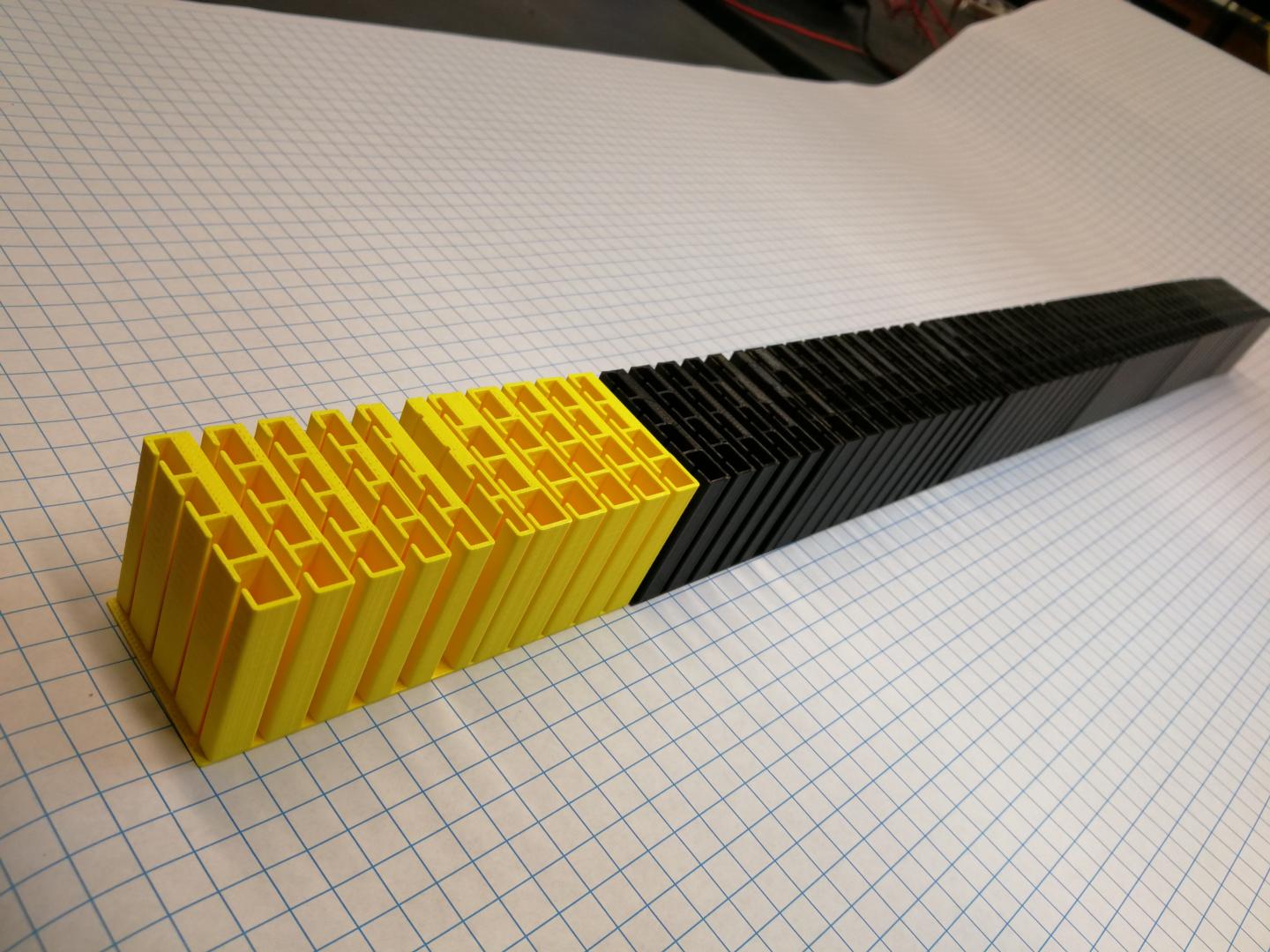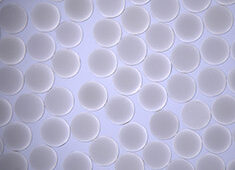
This metamaterial surface has been engineered to perfectly and simultaneously control the transmission and reflection of incoming sound waves. Credit: Junfei Li
A team from Duke University has demonstrated a design and construction of a new thin metamaterial that is able to control the redirection and reflection of sound waves with nearly perfect efficiency.
The researchers used metamaterials—artificial materials that manipulate waves like light and sound through their structure rather than their chemistry—made out of 3D printed plastic to create the new design.
The metamaterial is made of a series of rows of four hollow columns, with each column being nearly one-half of an inch on a side with a narrow opening cut down the middle of one side.
The team was able to control how the device manipulates sound through the width of the channels between each row of columns and the size of the cavity inside each individual column. Some columns are wide open while others are nearly closed off and each column resonates at a different frequency depending on how much of it is filled in with plastic.
As a sound wave travels through the device, each cavity resonates at its prescribed frequency, which not only affects the speed of the sound wave but also interacts with its neighboring cavities to tame both transmission and reflection.
“Previous devices could shape and redirect sound waves by changing the speed of different sections of the wave front, but there was always unwanted scattering,” Junfei Li, a doctoral student and first author of the paper, said in a statement. “You have to control both the phase and amplitude of both the transmission and reflection of the wave to approach perfect efficiencies.”
The vibrating columns interact with both the sound wave and their surrounding columns. This forced Li to write an “evolutionary computer optimization program” to work through all the design permutations.
The team fed the program the boundary conditions required on each side of the material to dictate how they wanted the outgoing and reflected waves to behave.
After trying a random set of design solutions, the program mixes various combinations of the best solutions, introduces random “mutations,” and then runs the numbers again. The program will eventually evolve a set of design parameters to provide the desired result.
The researchers demonstrated that one set of solutions could redirect a sound wave coming straight at the metamaterial to a sharp 60-degree outgoing angle with an efficiency of 96 percent.
According to the study, the versatility of the approach is shown through the design of three refractive metasurfaces capable of redirecting a normally incident plane wave to 60, 70, and 80-degrees on transmission.
Engineers have struggled to develop such a device, largely due to the inability to simultaneously control both the transmission and reflection of sound in the exact desired manner.
However, the new design has demonstrated complete and near perfect control of sound waves for the first time. The design is also quickly and easily fabricated using 3D printers.
“Controlling the transmission and reflection of sound waves this way was a theoretical concept that did not have a path to implementation–nobody knew how to design a practical structure using these ideas,” Steve Cummer, professor of electrical and computer engineering at Duke, said in a statement. “We solved both of those problems. Not only did we figure out a way to design such a device, we could also make one and test it. And lo and behold, it actually works.”
The researchers now plan to transfer the ideas to the manipulation of sound waves in water for applications like sonar.
“When talking about waves, I often fall back on the analogue of an optical lens,” Cummer said. “If you tried to make really thin eyeglasses using the same approaches that these sorts of devices have been using for sound, they would stink. This demonstration now allows us to manipulate sound waves extremely accurately, like a lens for sound that would be way better than previously possible.”
The study was published in Nature Communications.




